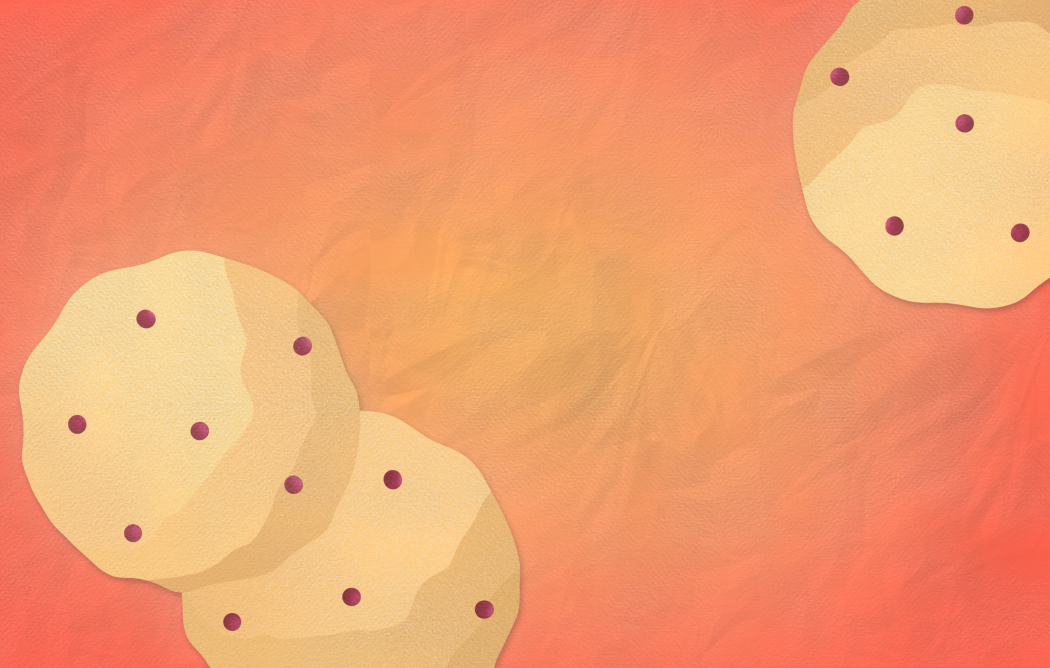No cookie gets as much hate as the oatmeal raisin. We’ve all heard the common complaint of picking up a chocolate chip cookie only to find out that you’ve just bit into a shriveled grape. While I understand why so many people think that raisins are a sad food, I argue that the oatmeal raisin cookie is just as good as the beloved chocolate chip.
You can continue enjoying your chocolate chip cookie, but the hate against oatmeal raisin is unwarranted.
It is no secret that the biggest qualm against oatmeal raisin cookies is the raisins. While chocolates are widely-loved treats, raisins are quite possibly the worst snack you could get as a kid. I admit, I would not be ecstatic if someone gave me a bright red box of Sun-Maid dried grapes. However, even if raisins are unappealing on their own, their mixture with the nutty flavor of oats and warm cinnamon produces a symphony of nuanced flavors that a chocolate chip cookie sometimes lacks. Canada and America’s favorite cookie is lovely, don’t get me wrong, but too often do I find it to be too sweet, too chocolatey, texturally unappealing, or just bland. Oatmeal raisin cookies, on the other hand, are consistently good, perhaps because they are less popular and there are fewer recipes floating around for someone to screw up. Oats give it textural variety and a bit of tooth, a dash of cinnamon and nutmeg deliver warm, nostalgic sentiments that should be experienced when indulging in a cookie, and raisins offer a fruity sweetness that—unlike chocolate—will never be cloyingly sweet.
One may ask, if oatmeal raisin cookies are so good, then why aren’t they as popular? Millions of oatmeal raisin haters must be in the right somehow. To that, I say, fine. You can continue enjoying your chocolate chip cookie, but the hate against oatmeal raisin is unwarranted. The most ridiculous argument against these innocent sweet treats is that because they contain oats and raisins they are healthy. Therefore, their perceived “healthiness” automatically deems them as inferior. In reality, oatmeal raisin cookies have similar nutritional values to the chocolate chip variety.
We have continually forgotten about the important role that the underdog can play.
Raisins and nutrition facts aside, there seems to be a belief that chocolate chip cookies are ‘the people’s cookies.’ They’re widely available at any bakery, and anyone—from elementary school kids to professional bakers—can easily whip up a batch in a few minutes. The same can be said for oatmeal raisin. In fact, I would argue that they are more deserving of the title of ‘the people’s cookie.’
While it was a major advertising agency that encouraged Quaker Oats and Sun-Maid to combine their forces and push the oatmeal raisin cookie into popularity, its origins are humble. Oats are a nutritious and economical grain that have been used to make savory and sweet treats for hundreds of years. Oat milling innovations in Ohio by the German immigrant Ferdinand Schumacher (also known as the “Oatmeal King”) in the 1850s kept Americans fed during the Civil War, as they were relatively cheap and could be cooked much faster than their steel-cut counterparts. It was not until the early twentieth century when raisins were introduced into the oatmeal cookie world. In 1912, the California Associated Raisin Company (a cooperative now known as Sun-Maid) sent a train to travel from the agricultural heartland of California to Chicago to advertise their bright and shiny new commodity: raisins. Before, dried grapes were imported from far-off countries like Spain. Farming innovations by M. Theo Kearney (more commonly known as the “Raisin King”) at the turn of the twentieth century made it so that raisins could be produced domestically. Eliminating the long trip between Spain and Turkey to the United States ensured that by the time shoppers bought a box of raisins, they remained fresh and could be sold at a cheaper price. Oatmeal raisin cookies were and still are easily accessible to the masses. During times of economic downturn (like the Great Depression) or food rations (such as during the World Wars), the cookies—which were called “oatmeal hermits”—became a much more reliable baking option. Oats and raisins were suitable stand-ins for luxuries like flour and sugar, and during these years chocolate was not even an option.
It is natural to want to be a part of the majority. After all, being in majority is often conflated with being in the right.
Although in modern times chocolate chip and oatmeal raisin cookies are equally accessible, this should not take away from the deliciousness of a fresh-out-of-the-oven ORC. I’m not saying that they should dethrone the chocolate chip cookie entirely or that we must all change our dessert preferences. Rather, we should stop treating oatmeal raisin cookies with such disappointment and disgust. Oatmeal raisin’s fascinating history and nostalgic taste make these cookies an iconic homemade treat that I hope future generations will embrace.
We have continually forgotten about the important role that the underdog can play. While not as shiny and attractive at their face-value, oatmeal raisin cookies are so much more than their parts. Despite the widespread disappointment that many claim to experience when they unknowingly bite into an ORC with the belief that it was a chocolate chip cookie, oatmeal raisin is still a popular flavor. If we know through popular opinion that millions enjoy them, then why do they still receive so much unwarranted criticism? As we live in an era that is hyper-focused on external affirmation and popularity, perhaps people have exaggerated their hate or have simply hidden their positive views on oatmeal raisin cookies. It is natural to want to be a part of the majority. After all, being in majority is often conflated with being in the right. However, we should not feel shame and hide our more unpopular opinions—especially if we are talking about something as harmless as a baked good. We can enjoy both chocolate chip and oatmeal raisin cookies without needing to completely purge one from the cookie conversation.


